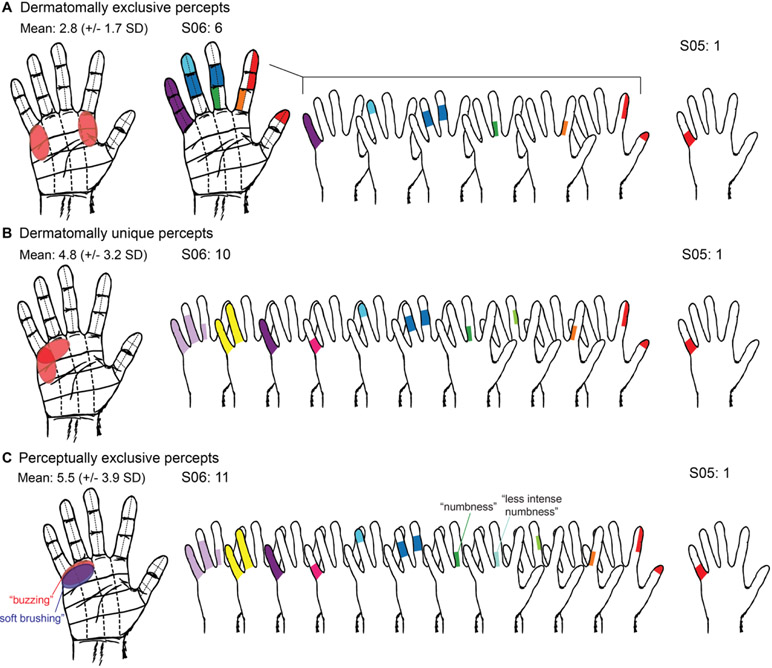Figure 5.
Usable percepts, or “degrees of freedom” based on dermatomally exclusive somatosensory percepts. A. Representation of dermatomally exclusive receptive fields, in which percepts were not allowed to include a portion of any other percept. On average, 2.8 boxes were noted per grid. A subject with a high number of dermatomally exclusive receptive fields was S06, shown for illustration. This subject had 5 dermatomally exclusive receptive fields, each represented by one color. The subject with the least number of dermatomally exclusive receptive fields was S05, with only one dermatomally exclusive receptive field. B. Representation of dermatomally unique receptive fields, which may have some overlap of boxes, but not complete overlap. A mean of 4.8 per grid was noted. A representative subject with a high number of dermatomally unique receptive fields is S06, with 10 dermatomally unique receptive fields, each represented by one color. The subject with the least number of dermatomally unique receptive fields was S05, with only one dermatomally unique receptive field. C. Representation of perceptually exclusive percepts, where completely overlapping boxes that had distinguishable sensations were included. Overall, a mean of 5.5 were noted per grid. A subject with a high number of perceptually exclusive receptive fields is S06, with 11 perceptually exclusive percepts fields, each represented by one color. Digit 3 at the base is represented twice with two different percepts that were stable and distinguishable on repeat stimulations. The subject with the least number of perceptually exclusive percepts was S05, with only one perceptually exclusive percept.

